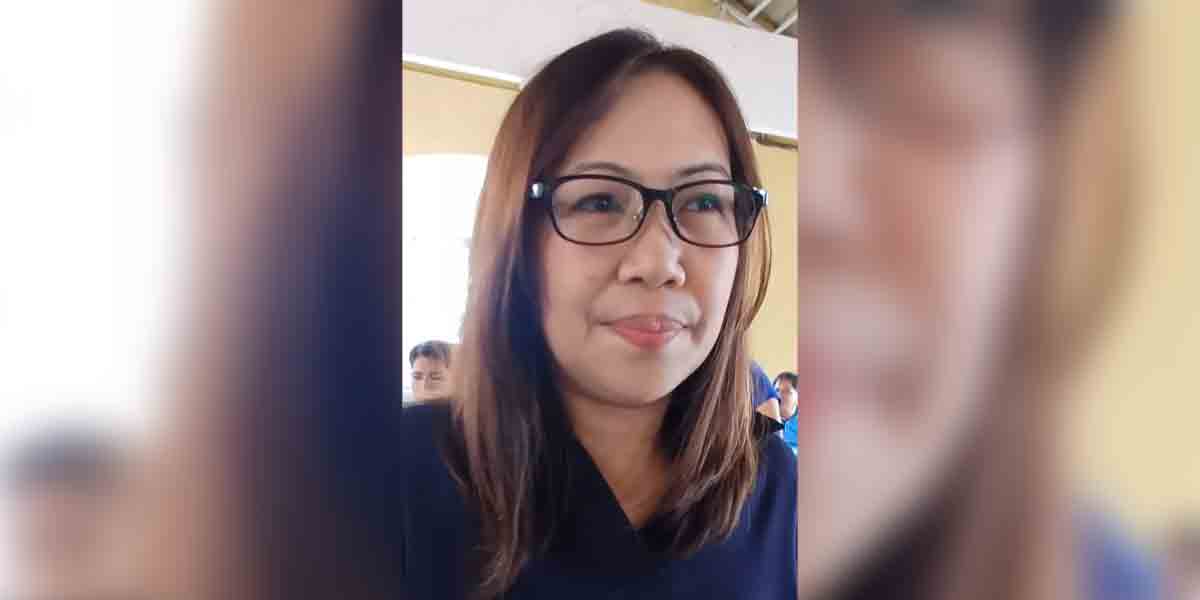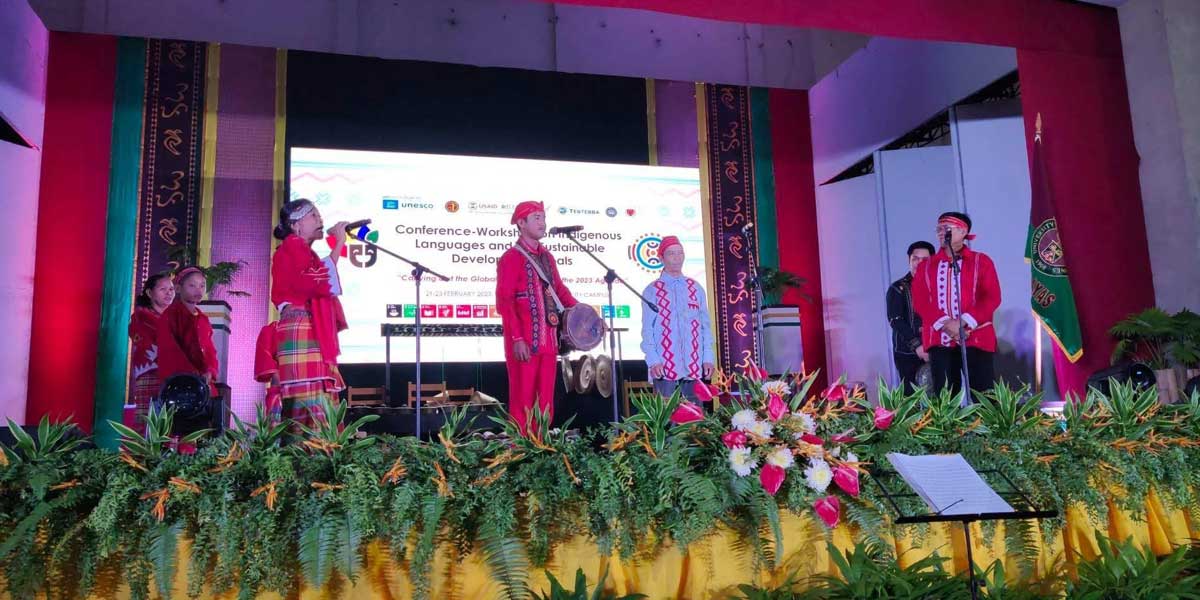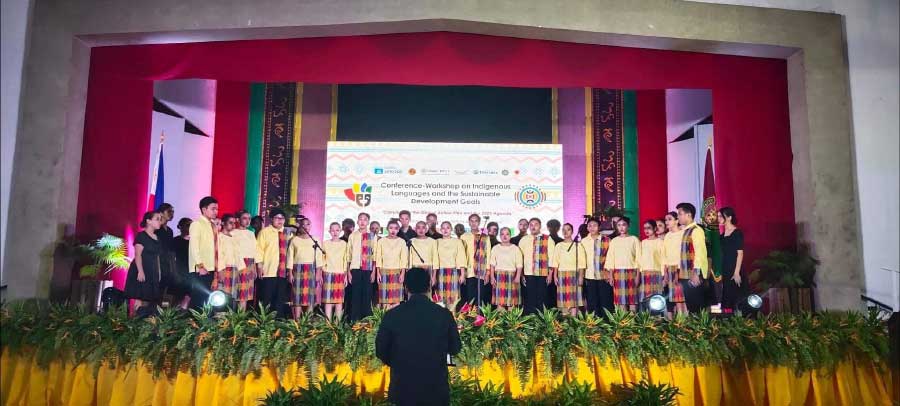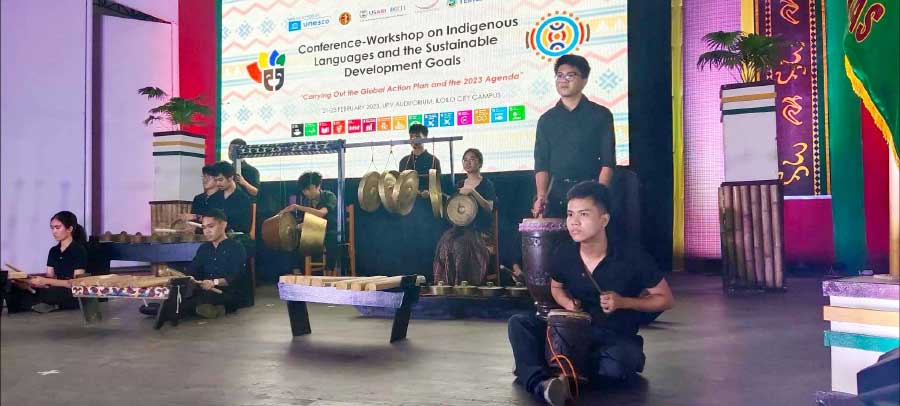A superb performance of the UP High School in Iloilo students through gongs and voice performances were showcased last February 21, 2023 at the 2023 Conference-Workshop on Indigenous Languages and Sustainable Development Goals organized by Talaytayan Multilingual Education, Tebtebba Foundation, ABC Plus, and hosted by UP Visayas. The concert also featured the Panay Bukidnons, as they showcased their traditional dance and oral narratives.
Three performing groups presented a repertoire of musical and artistic renditions: the UPHSI Gongs, the UPHSI Harana Choir and the Panay Bukidnon Indigenous Cultural Group from Tapaz, Capiz.
The UPHSI Gongs gave an outstanding performance that resonated and invoked tradition. They brought together traditional gong and drum pieces from different indigenous cultural communities in the Philippines.
Fot Moto, or “Four Eyes” is a traditional Teduray teasing music that is played using small gongs called sagagong during wedding celebrations. The other two pieces are music played by the Maguindanao people on the Palabunibunyan. The binalig piece, one of the four types of kulintang pieces, is played to express different emotions like anger, love, and joy. This is followed by a simple tagunggo ritual music that is played during healing ceremonies.
The next music, Ditagaunan, was a traditional Maranao melody that talks about a person getting kamote, a root crop believed to bring good luck and abundance because of its vines. A T’boli piece called Senselong is a gong playing technique that features “a meeting of the hands.” Tagunggo music from Maguindanao capped the gong playing performance.
The music interest group composed of junior and senior high school students was born out of music education classes in the secondary level. The group performs traditional music pieces documented by pioneering Philippine ethnomusicologists, which were simplified and organized for music education. The group was put together and trained by UP High School in Iloilo faculty member and ethnomusicologist, Prof. Jose Taton.
A moving and powerful performance from the UPHSI Harana Choir echoed during the cultural night of the three-day conference. It was a potpourri of choral arrangements of folk and popular songs from the Philippines. Magmamani is an Aklanon folk song that talks about the life of a peanut vendor. This was followed by a song called Pasigin, which refers to a traditional fish net utilized by Visayans in harvesting fish.
Another piece was “Minsan Lang Kita Iibigin,” which is about one’s expression of unfaltering affection. The final performance, “Bahay,” focused on the experience of poor and underprivileged resident families living in houses located along dump sites. “Bahay” stirred the emotions and brought tears among the audiences.
The UPHSI Harana Choir is a youth choir of UPHSI that promotes the music of Western Visayas through choral singing. Since its inception, it had already performed for various occasions, both in local and international events in the region. The group was trained and conducted by music prodigy Prof. Hermie Cartagena of UPHSI.
The last set from the Panay Bukidnons delivered performances that was comprised of epic chanting, musical repartee, and dancing from the Panay Bukidnon indigenous cultural communities of Calinog, Iloilo, and Tapaz, Capiz.
The Suguidanon is a long chanted narrative about cultural heroes and heroines of the Panay Bukidnon worldview. In Sinagnayan, the hero Labaw Donggon is tasked by his strong-willed wife with the difficult mission of defeating Sinagnayan with stories of a golden lion which conceals the life of Sinagnayan in an egg kept inside its heart. Talda is a musical repartee laden with metaphorical undertones that expresses various themes – love, rebuke, longing, and even insults – to another person in altercating musical fashion.
The last performances consisted of two binanog or hawk-eagle dance performances – the Tinigbabayi and Tiniglalaki. The binanog is a music-dance expression that mitates the flight of the banog bird. The first dance is solely performed by females while the second demonstrates a male and female couple in an energetic play of kerchiefs.
The performers are cultural bearers of the Tapaz Indigenous Cultural Communities lead by Norio Lozada, Estrella Gilbaliga, and Rennel Lavilla. (Ms. AL Ramirez, IPO with notes from Prof. Jose Taton, Jr.)
























